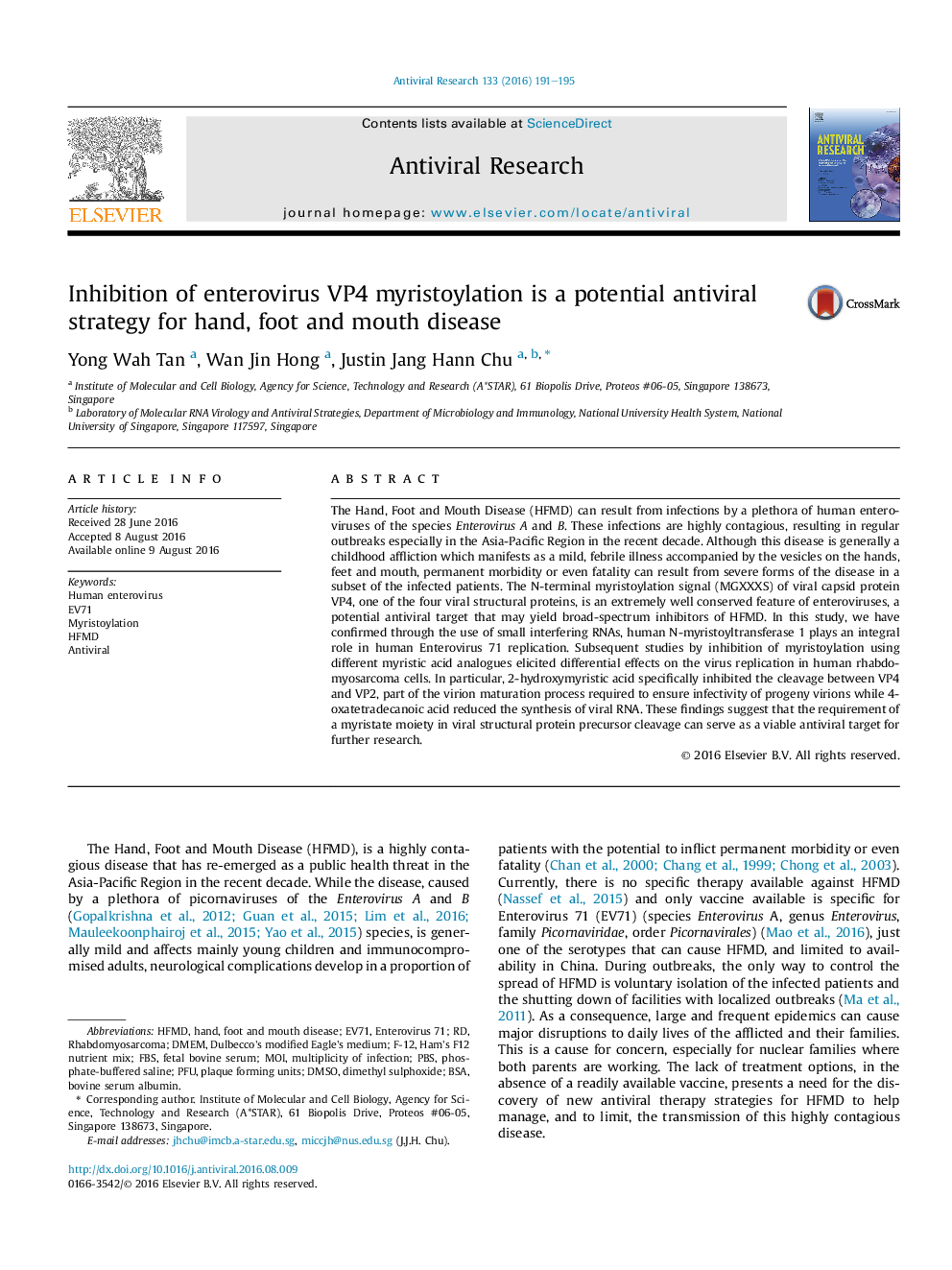| Article ID | Journal | Published Year | Pages | File Type |
|---|---|---|---|---|
| 5821703 | Antiviral Research | 2016 | 5 Pages |
â¢Human NMT1 is involved in the replication of EV71 in cultured cells.â¢Inhibitory myristic acid analogues impacts the production of progeny virus.â¢Myristoylation is important for processing of viral polyprotein by EV71 3C protease.â¢Myristoylation is also critical for the cleavage of EV71 VP0 into VP2 and VP4.
The Hand, Foot and Mouth Disease (HFMD) can result from infections by a plethora of human enteroviruses of the species Enterovirus A and B. These infections are highly contagious, resulting in regular outbreaks especially in the Asia-Pacific Region in the recent decade. Although this disease is generally a childhood affliction which manifests as a mild, febrile illness accompanied by the vesicles on the hands, feet and mouth, permanent morbidity or even fatality can result from severe forms of the disease in a subset of the infected patients. The N-terminal myristoylation signal (MGXXXS) of viral capsid protein VP4, one of the four viral structural proteins, is an extremely well conserved feature of enteroviruses, a potential antiviral target that may yield broad-spectrum inhibitors of HFMD. In this study, we have confirmed through the use of small interfering RNAs, human N-myristoyltransferase 1 plays an integral role in human Enterovirus 71 replication. Subsequent studies by inhibition of myristoylation using different myristic acid analogues elicited differential effects on the virus replication in human rhabdomyosarcoma cells. In particular, 2-hydroxymyristic acid specifically inhibited the cleavage between VP4 and VP2, part of the virion maturation process required to ensure infectivity of progeny virions while 4-oxatetradecanoic acid reduced the synthesis of viral RNA. These findings suggest that the requirement of a myristate moiety in viral structural protein precursor cleavage can serve as a viable antiviral target for further research.
